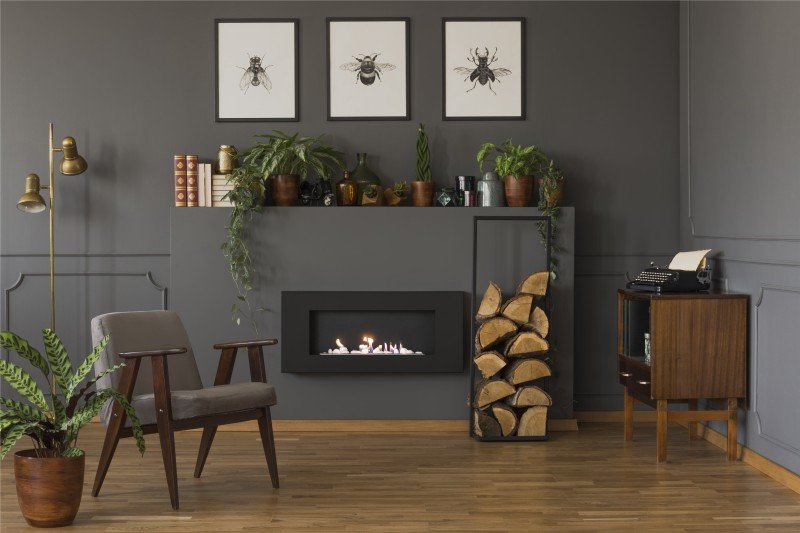Small Fireplaces: The Evolution Of Small Fireplaces
A Comprehensive Guide to Small Fireplaces: Efficient Heating and Cozy Living
In an era where energy effectiveness and space optimization are becoming progressively crucial, small fireplaces have become an enticing option to traditional, large hearths. These compact heating solutions offer heat and a centerpiece for any room, increasing both convenience and visual appeal. This post explores the different types of small fireplaces, their advantages, setup considerations, and upkeep ideas, eventually assisting house owners make informed decisions when thinking about these captivating heating alternatives.
Understanding Small Fireplaces
Small fireplaces provide a variety of styles, consisting of electric, gas, ethanol, and wood-burning models. Each type provides unique benefits and design possibilities, making them suitable for numerous living spaces.
Kinds Of Small Fireplaces
Fireplace Type
Description
Pros
Cons
Electric
Uses electrical power to produce heat. Provides numerous designs, including wall-mounted and freestanding systems.
- Easy to set up
- Low maintenance
- No venting required
- Limited heat output
- May incur higher electrical power costs
Gas
Burns gas or gas. Typically offered as logs in a traditional fireplace or modern designs.
- Efficient heat output
- Cleaner than wood
- Easy ignition
- Requires gas line setup
- Some systems require venting
Ethanol
Burns bioethanol, supplying genuine flames without a chimney.
- Eco-friendly
- Portable
- No setup required
- Limited heat output
- Higher fuel costs
Wood-Burning
Traditional fireplaces that burn fire wood. Typically utilized in more rustic settings.
- Great heat output
- Rich ambiance
- Can be utilized during power failures
- Requires a chimney
- Regular upkeep and cleaning
Advantages of Small Fireplaces
- Space Efficiency: Small fireplaces are perfect for homes, condos, and smaller sized homes. Buy Fireplaces take full advantage of warmth without taking up extreme floor area.
- Cost-efficient Heating: In certain cases, small fireplaces can supplement main heating unit, lowering general energy costs while producing a more comfy environment.
- Atmosphere and Aesthetics: They offer a welcoming focal point to a room, creating a cozy atmosphere perfect for relaxation and celebrations.
- Versatility: Available in numerous styles and styles, small fireplaces can match any decor, from modern minimalist to rustic traditional.
Setup Considerations
When contemplating a small fireplace, setup is a crucial factor that can impact the option of design. Below are valuable considerations:
- Local Regulations: Building codes can vary by area; constantly check regional standards before installation.
- Ventilation Needs: Depending on the type, small fireplaces may need different ventilation systems. Gas fireplaces might require venting outdoors, while electric designs don't.
- Source of power: Electric designs need distance to electrical outlets, while gas and ethanol designs may require a gas line or fuel storage.
- Weight and Structure: Installing wall-mounted systems might need enhanced wall locations, whereas free-standing designs are easier to relocate.
Maintenance Tips
Like any other home appliance, small fireplaces require regular maintenance to work efficiently and securely. Here are essential upkeep suggestions for numerous fireplace types:
For Electric Fireplaces:
- Cleaning: Wipe down the unit with a soft fabric to remove dust and keep the heater ducts clear.
- Evaluation: Check the power cable routinely for any damages or signs of wear.
For Gas Fireplaces:
- Annual Inspections: Schedule annual evaluations by an expert to make sure safe gas circulation.
- Clean the Logs: Regularly tidy the burner and logs to keep optimum performance.
For Ethanol Fireplaces:
- Fuel Storage: Store ethanol fuel safely far from direct sunshine and heat sources.
- Routine Cleaning: Clean the burner after each use to preserve effectiveness and prevent soot buildup.
For Wood-Burning Fireplaces:
- Chimney Sweeping: Have the chimney expertly cleaned when a year to avoid creosote accumulation.
- Fire wood Storage: Only use dry, skilled wood to reduce smoke and promote effective burning.
Often Asked Questions
1. Can I install a small fireplace myself?
While some electric and ethanol fireplaces are relatively simple to install, it is advisable to work with an expert for gas and wood-burning systems to ensure compliance with local structure codes.
2. Just how much does it cost to run a small fireplace?
The cost will vary depending upon the type of fireplace. Generally, electric fireplaces might incur greater electricity costs, while wood-burning alternatives can draw from renewable fire wood products.
3. Do I need an authorization for setup?
Authorizations are normally required for gas and wood-burning fireplaces due to their setup complexity and security policies. Constantly consult regional authorities.
4. How long can I run an electric fireplace?
The majority of electric fireplaces can run for long durations; nevertheless, it's recommended to follow maker standards to avoid getting too hot or harming the system.
5. What kind of small fireplace is best for a small space?
This mostly depends on private needs. Electric designs are flexible and easy to set up, while gas and ethanol options supply genuine flames with efficient heat output.
Small fireplaces represent a functional and stylish option for those seeking effective heating options in compact living spaces. With various types available, homeowners can choose models that line up with their visual choices and area requirements. By comprehending the setup procedures and routine maintenance needed, individuals can enjoy the comfort and atmosphere that small fireplaces use for many years to come. Whether for a cozy evening in the house or an inviting space for events, small fireplaces are an enduring element of modern and traditional design alike.
